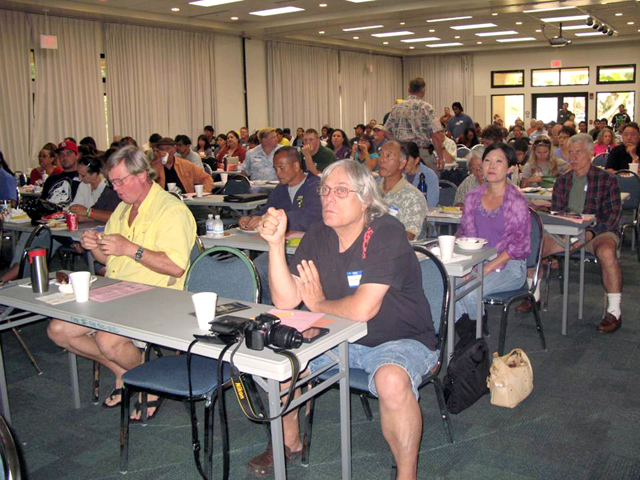Richard Ha writes:
This letter from Glenn Teves, who is a Moloka‘i extension agent, is full of good, practical advice for new farmers. Over the years I've found that going to your extension agent is usually the best place to start.
It's out of the Hawai‘i Homegrown Food Network newsletter, July 2014.
Letter to Sonny – Creating a Farm Business
WRITTEN BY GLENN TEVES ON 27 JUNE 2014.
In farming, the real test when you fall down is how fast you get up and move forward. Below is a letter I wrote to a Hawaiian homesteader several years ago. He was interested in farming, but for some reason he had a difficult time understanding what he needed to do in order to create a farm business, and also wasn’t realistic about his goals. He was looking for solutions such as setting up a farm to teach others how to farm without having a basic knowledge of farming, or networking with others to get his farm started when he didn’t have any production.
I really had to write everything down to help him understand without dampening his enthusiasm and spirit. I think it may help anyone who’s interested in farming. There are many concepts to grasp, including a few doses of reality along the way. Here it is:
Dear Sonny,
I write this to you to help you focus and see the steps you need to take in order to create a farm business. In life, you need to crawl before you can walk. There’s so much to know, and you cannot ‘skip grades’; you have to start at kindergarten. You have to be diligent in learning all you can by studying, and you have to go at it with both eyes open. Most farmers in Hawaii farm part-time because they cannot earn enough money on their farm, and they also want to have medical coverage for their family. Parttime farming is also a growing trend in the nation.
Motivation
There are certain attributes that must be in place in order to be successful in farming. One is the willingness and motivation to farm and to overcome any adversity. We cannot supply this because it comes from deep within you. If you’re easily discouraged, farming is not for you. This stick-to-it-ness is important especially when things don’t go the way you expected. When the going gets rough, the tough get going. In farming, the real test when you fall down is how fast you get up and move forward.
Break It Down
Gerry Ross and Janet Simpson of Kupa'a Farms, Maui. Farming is hard work and there’s a sequence to things. One thing I’ve learned is I try to focus on a few things at a time because if I try to see the whole picture, it becomes so overwhelming….
Great article. Read the rest here.




